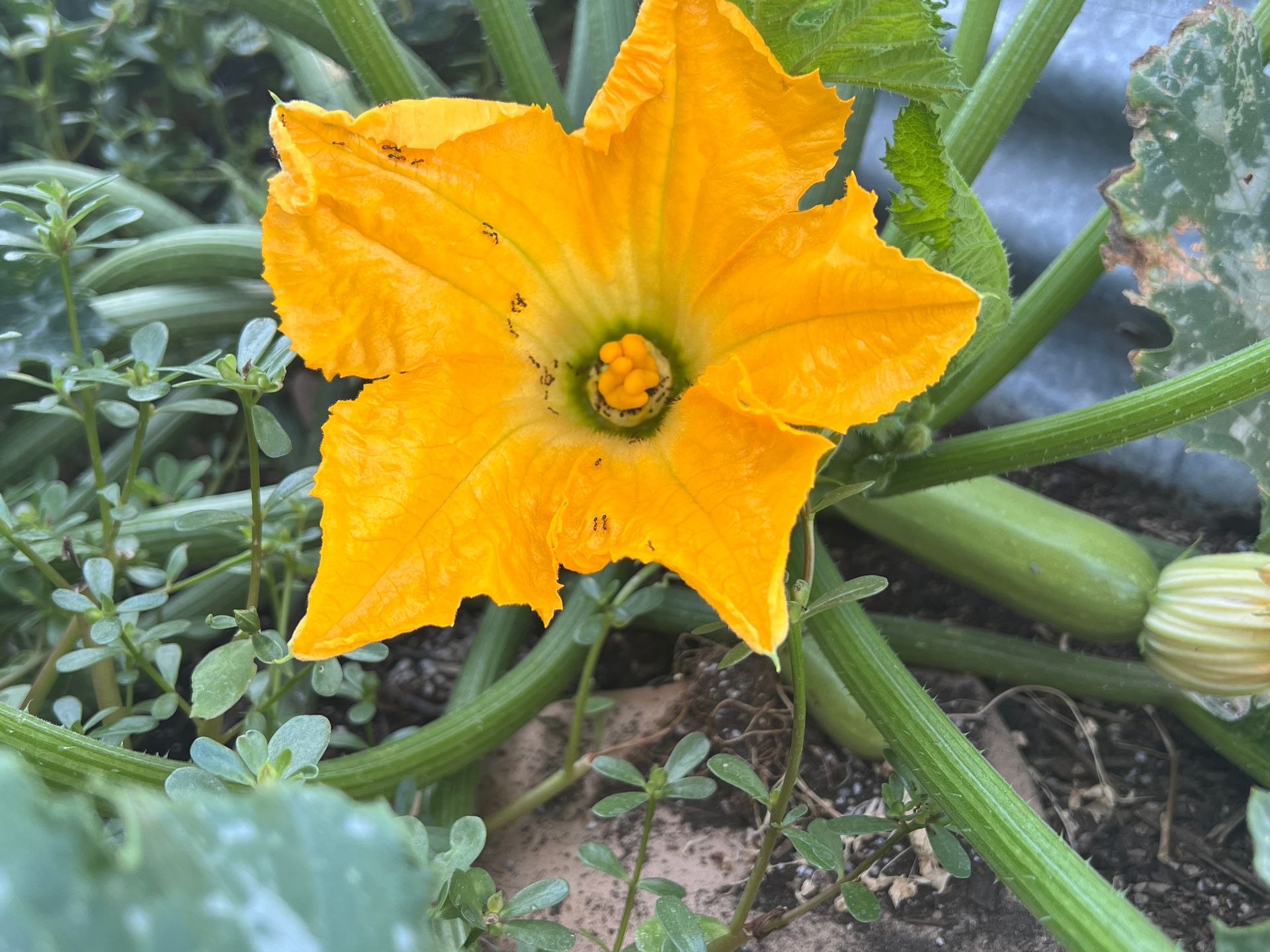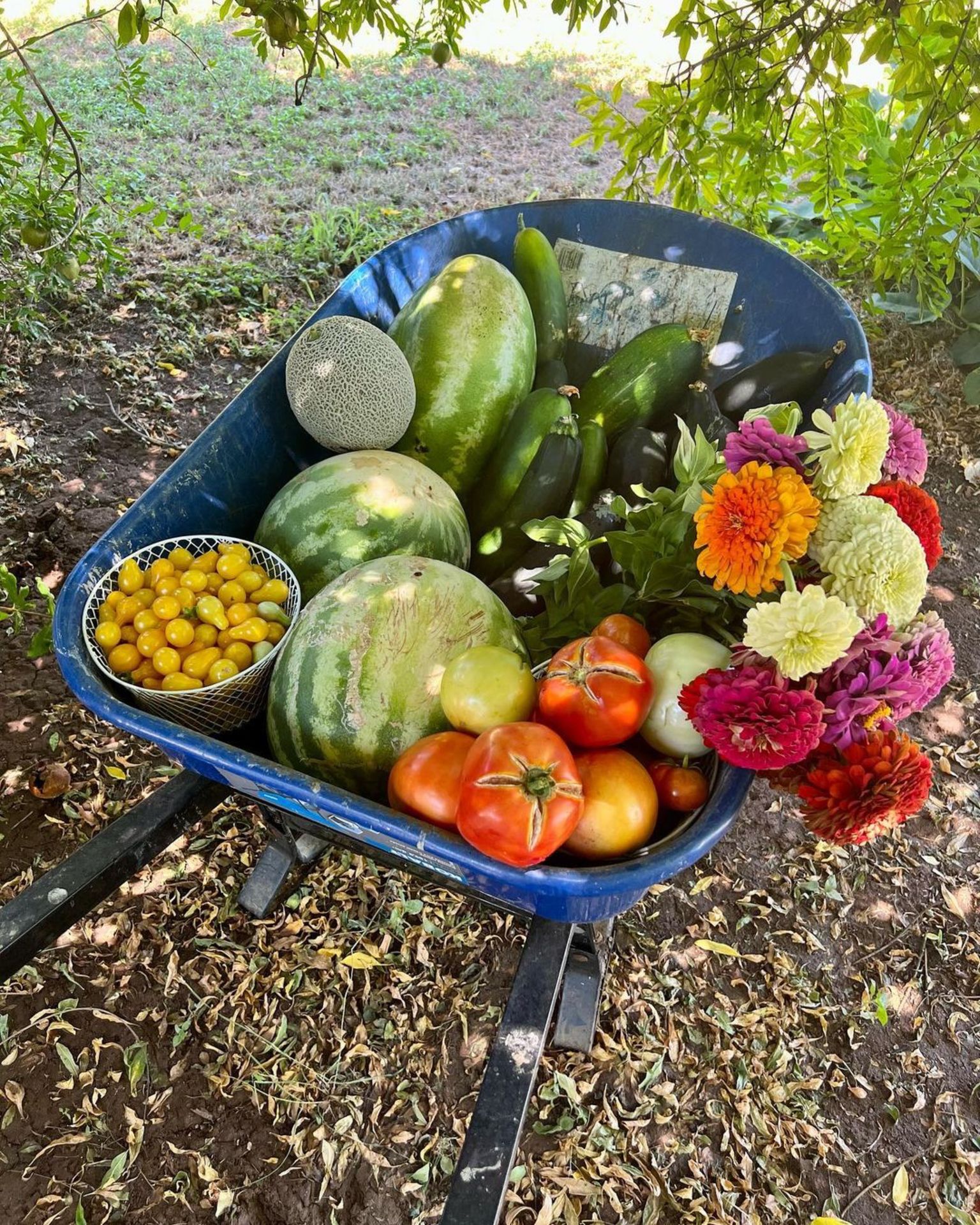Monsoon Gardening in Arizona
Monsoon Gardening in Arizona: Phoenix, Tucson & Southern Arizona Guide
Arizona's monsoon season, typically running from mid-June through September, transforms our desert landscape into a brief paradise of humidity, dramatic storms, and incredible growing opportunities. This unique weather pattern brings both challenges and rewards for gardeners across the Valley and Southern Arizona. Here's how to make the most of monsoon season in your garden, whether you're in Phoenix, Tucson, or anywhere in between.
Understanding Arizona's Monsoon Magic

The monsoon season is characterized by afternoon thunderstorms, increased humidity, and occasional flooding rains. While Phoenix averages about 2.5 inches of rain during the monsoon, Tucson and areas of Southern Arizona can receive significantly more—sometimes 6 inches or more—due to their higher elevation and proximity to Mexico's Sierra Madre mountains where monsoon moisture originates.
This sudden influx of water and humidity creates a second growing season in the desert, allowing gardeners to cultivate heat-loving crops that thrive in warm soil and abundant moisture.
Pre-Monsoon Preparation (May-Early June)
Phoenix Area
Before the rains arrive, prepare your garden beds by improving soil structure. The intense heat of late spring and early summer has likely depleted nutrients and broken down organic matter. This is the perfect time to incorporate compost and prepare planting areas.
Tucson & Southern Arizona
With slightly cooler temperatures and higher elevation, Tucson gardeners can start preparation a bit earlier. Focus on building berms and swales to capture and direct monsoon water where you want it, rather than letting it create erosion channels.
Fertilizer Strategy
Preparing the Soil for the Monsoon
The dry months before the rains can leave soil compacted and nutrient-depleted. When that first big storm hits, much of the water can run off unless you’ve loosened and enriched your garden beds.
This is where Earth’s Original Organics Magic Mix (4-3-1) comes in.
- It’s a biologically active organic fertilizer designed to rebuild soil health rather than just feed plants.
- This gives beneficial microorganisms time to activate before seeds or transplants go in the ground.
- The rich organic base improves water retention while encouraging microbial life — perfect for holding on to that sudden influx of monsoon moisture.
- Mix it into the top few inches of soil before the rains or water it in lightly after the first storm to jumpstart the microbial activity.
Pro tip: Think of Magic Mix as food for the roots and the soil life that supports them. Healthy roots mean stronger shoots once growth resumes.
What to Plant for Monsoon Season
Phoenix (Low Desert - Zone 9b/10a)

The Phoenix area's extreme heat means you'll focus on truly heat-tolerant crops:
- Warm-season vegetables: Armenian cucumber, luffa gourd, yard-long beans, okra, and Sonoran summer squash
- Herbs: Basil (especially Thai and African blue basil), Cuban oregano, and heat-tolerant cilantro varieties
- Melons: Cantaloupe and desert-adapted watermelons thrive in the heat.
Plant these crops in early July, right as monsoon moisture begins. The combination. of warm soil (80-85°F) and regular rainfall creates ideal conditions.
Tucson & Southern Arizona (Mid-elevation Desert - Zone 8b/9a)

With slightly milder summer temperatures, Tucson gardeners have more options:
Everything Phoenix can grow, plus:
- Summer squash and zucchini (which struggle in Phoenix's extreme heat)
- Cherry tomatoes (heat-tolerant varieties)
- Cowpeas and tepary beans (native crops perfectly adapted to the region)
- Summer herbs like Mexican tarragon and lemongrass
Tucson's higher elevation (2,400 feet vs. Phoenix's 1,100 feet) means nighttime temperatures drop more, which many vegetables appreciate.
Fertilizing Through the Monsoon
Magic Mix for Soil Building
Throughout the growing season, side-dress your vegetables with Magic Mix every 4-6 weeks. This complete fertilizer provides:
- Nitrogen for leafy growth
- Phosphorus for root development
- Potassium for fruit production and disease resistance
- Essential trace minerals
Apply Magic Mix in a ring around plants, 4-6 inches from the stem, and water in thoroughly. The monsoon rains will help incorporate nutrients into the root zone.
Magic Flower for Blooming & Fruiting
Once your plants begin flowering, switch to Earth's Original Organics Magic Flower. This specialized formulation is designed for:
- Blooming herbs like basil (to encourage continuous leaf production through flowering)
- Fruiting vegetables including squash, cucumbers, beans, melons, and okra
- Pollinator-attracting flowers you might plant to support your vegetable garden
Magic Flower has a higher phosphorus ratio to support flower and fruit development, plus calcium and other nutrients that help prevent blossom end rot and improve fruit quality. Apply every 4-6 weeks during peak production.
The beauty of both Magic Mix and Magic Flower is their organic formulation—they won't burn plants during monsoon's temperature swings and they continue to improve soil health with every application.
Watering Strategies
Phoenix
Even with monsoon rains, Phoenix gardens often need supplemental watering. Afternoon storms can be hit-or-miss, with one neighborhood getting drenched while another stays bone-dry. Check soil moisture regularly and water deeply if your area hasn't received rain in 1-4 days depending on what you are growing in the garden.
Tucson & Southern Arizona
Tucson typically receives more consistent monsoon moisture. However, the rain often comes in brief, intense bursts that run off rather than soak in. Mulch heavily (4-6 inches) to help capture and retain this precious water. Use sunken beds or basins around plants to catch rainfall.
Pest & Disease Management
The combination of heat and humidity during monsoon creates ideal conditions for both plants and pests.
Common Monsoon Challenges
- Aphids: Often explode during monsoon. Spray with water or use insecticidal soap.
- Whiteflies: Especially problematic on squash family plants. Yellow sticky traps help monitor populations.
- Powdery mildew: High humidity invites fungal diseases. Ensure good air circulation and avoid overhead watering.
- Root rot: Can occur in poorly-draining soil during heavy rains. Plant in raised beds or mounds.
Phoenix-Specific Issues
The extreme heat, even during monsoon, can stress plants and make them more susceptible to spider mites. Maintain adequate soil moisture and water plants during the hottest part of the day if humidity drops and they wilt.
Tucson-Specific Issues
Higher rainfall means greater potential for fungal diseases. Remove affected leaves promptly and avoid working in the garden when plants are wet.

Harvesting & Enjoying the Bounty
By late July and August, your monsoon garden should be producing abundantly. Harvest regularly to encourage continued production:
- Squash and cucumbers: Pick every 2-3 days when fruits are young and tender
- Beans: Harvest every other day at peak production
- Okra: Cut pods when 3-4 inches long; they become tough if left longer
- Basil: Pinch growing tips regularly to prevent flowering and encourage bushy growth
Post-Monsoon Transition (Late September-October)
As monsoon rains taper off, begin planning for fall planting:
1. Remove spent summer crops that have been exhausted by months of heat and production.
2. Apply Magic Mix to rebuild soil for fall planting.
3. Start cool-season transplants indoors in mid-September (lettuce, broccoli, cauliflower).
4. Direct sow cool-season crops in September to October once nighttime temperatures drop below 70°F.
Regional Considerations: Beyond Phoenix & Tucson
Higher Elevations (Prescott, Flagstaff)
If you're gardening above 4,000 feet, your monsoon experience differs significantly. Cooler temperatures and more reliable rainfall mean you can grow traditional summer crops (tomatoes, peppers, beans) that struggle in the low desert. Your monsoon IS your main summer growing season.
Yuma & Southwest Arizona
Lower Colorado River regions experience less monsoon influence but extreme heat. Focus on the most heat-tolerant crops and don't be discouraged if production is lighter than in Phoenix or Tucson.
Final Thoughts
Monsoon gardening in Arizona is about working with nature's rhythms rather than against them. The sudden abundance of moisture and warmth creates a magical window for growing crops that simply won't succeed during other times of the year. By properly preparing your soil with quality organic fertilizers like Earth's Original Organics Magic Mix and Magic Flower, you're setting your garden up for success.
Whether you're in Phoenix dealing with extreme heat, Tucson enjoying slightly milder conditions, or anywhere else in Southern Arizona, the monsoon season offers a unique opportunity to connect with the desert's natural cycles and harvest fresh, homegrown produce during one of the most dramatic times of the year.
So grab your rain gauge, watch those thunderheads build, and get ready to garden in the desert's second spring. Your monsoon garden awaits!
